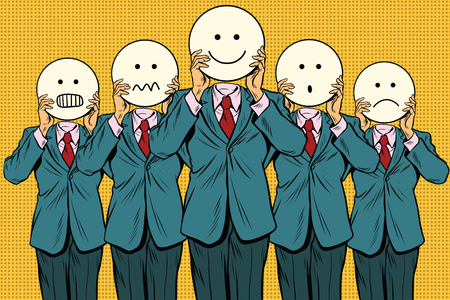
In this age of technical overload we tend to live in our heads rather than our hearts. Many of us spend a good amount of time every day in front of a computer or cell phone, completely detached from the world around us, our attention rarely in the present moment.
We also lead stressful lives due to our fast-paced culture, unhealthy diet and exercise habits, over-populated society and high personal demands to have it all, be it all, and to please everyone.
Because of this, our energies flow away from our power centers in the solar plexus and toward our brains, where our thoughts tend to fester in endless loops of rumination and worry. This negative mental activity throws us off-balance and cuts us off from our intuition, making us sensitive to even the tiniest stressors of life and detrimentally affecting our well-being and personal stability.
“Chaos has become the constant, and harmony the ever-elusive brass ring of being. We have grown complacently used to living at the mercy of our emotions.”
This instability causes us to lose hold of our emotions easily. The result is that we fly-off the handle with anger, become over-whelmed with sadness or anxiety, or suffer the slow burn of constant irritation. So prevalent are these uncomfortable emotional states that they are no longer the exception, but the norm for many of us. Chaos has become the constant, and harmony the ever-elusive brass ring of being. We have grown complacently used to living at the mercy of our emotions.
But it doesn’t have to be this way. You don’t have to live at the mercy of your emotions and reactions to life’s upsets. You have amazing tools at your disposal that you can utilize to re-center yourself and balance your emotions quickly and easily, wherever and whenever you wish. Read on to discover your tools for balance and learn how to be the master of your emotions.
Your Tools for Emotional Balance
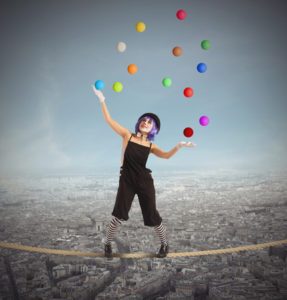
Breath
Your nervous system takes its cues from your breath, and your breath takes its cues from your mental activity. When you are in a fight or flight state of high emotion, your breathing becomes shallow and rapid. This causes your adrenal glands to secrete, your heart to speed up its rhythm, your glands to sweat and you to feel anxious and uncomfortable. Conversely, when you are thinking calm thoughts and your emotions are steady, your breathing will be slow and steady, and you will feel emotionally stable.
This means that regardless of your mental state, if you calm your breathing your body will follow. And once your body is feeling calm, you will find that your thoughts and emotions lose their power over you as they begin to mellow out. The result is that you will feel better if you deliberately slow and deepen your breathing pattern.
“Regardless of your mental state, if you calm your breathing your body will follow.”
If you find yourself in emotional turmoil, the quickest way to calm is to slow your breathing into a steady, relaxed pattern. This also gives your mind something to focus on in the moment, allowing you a mental break from the chaos so you can re-center yourself.
Mind
Thoughts are your number one tool for creativity. The way you think in any given moment affects not only the way you feel or the choices you make, but it is the motivating factor for the overall trajectory of your life.
We generally let our thoughts wander as they will, not realizing that we have to capacity to direct them. If you can learn to stop your thinking, or alter it even just a bit, you can choose the way you feel and the outcome of your actions. Meditation is the practice of stopping the thought process in order to realize the calm and still awareness behind your thoughts.
“The way you think in any given moment affects not only the way you feel or the choices you make, but it is the motivating factor for the overall trajectory of your life.”
When you are in chaos, take a moment to quiet your mind. Meditate, even for a moment, or focus your mind on something pleasant. With intention you can choose to think thoughts that follow a more positive pattern than the one you were in.
The more you practice quieting the mind, the easier this state is to achieve again. Make meditation a daily practice to exercise your ability to control your thinking, and thus your emotions.
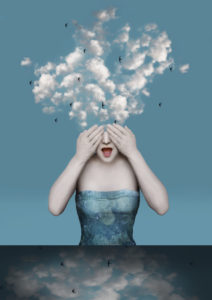
Visualization
Visualization is your tool for thought direction. When you conjure images in your head, you are choosing what to think, and when you conjure images in your head that match your desired outcomes in life, you are essentially creating your life as you wish it to be.
When you are in a stressful or upsetting situation, try using your imagination to conjure an image of how you want things to be, or how you would like the situation to resolve itself. Picture yourself feeling happy, successful, calm, or whatever you desire. Even better, picture anyone and everyone involved in your emotional trigger with a win-win scenario for all.
Just this exercise alone will not only calm you, it will actually help steer the outcome to a better path because you are using awareness to direct your life energy. Do this often enough and you will begin to realize the power of the mind to create life as you choose.
“When you conjure images in your head, you are choosing what to think, and when you conjure images in your head that match your desired outcomes in life, you are essentially creating you life as you wish it to be.”
Prana
Prana, also known as qi, chi, or life-energy, is a term used to describe the energy that flows within us, animating the physical body and giving us power and force behind our actions. Intangible yet detectable, it’s essentially a way to describe the battery of your life, or what makes you tick.
The flow of prana in the body is affected by your thoughts. When you are over-thinking and using too much mental energy, prana will leave its nesting place in the solar plexus and flow to your head. When you are overly emotional, prana will often move to the digestive and reproductive regions of your body. When you are angry, prana tends to pool in the liver and the heart. Too much prana flow to one area causes discomfort and, over-time, possible disease.
Centering is a term used to describe the process of directing the flow of prana back to its center in the solar plexus. When you are centered your emotions are calm, your physical state is relaxed, your mind is clear, and you feel alert and complete within your own personal power. It’s a pleasant, yet powerful, state of being, and the one from which you can operate most efficiently and effortlessly. For these reasons, it is beneficial to center your prana regularly.
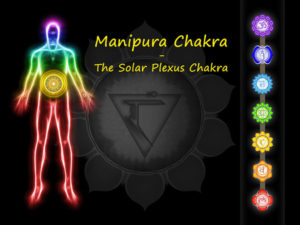
“Intangible yet detectable, it’s a way to describe the battery of your life, or what makes you tick.”
Pranayama is a yogic term used to describe the direction of prana via specific breathing patterns. There are hundreds of specific pranayama techniques created that direct the breath in order to achieve various goals, such as creating more energy for the self, increasing creativity, relaxing the body and, as demonstrated below, to calm and center the emotions.
To center your prana is easy. Utilizing your other three tools, calm your breath, quiet your mind, and visualize the flow of your prana moving to your solar plexus area around your navel. Picture a bright flow of light gathering in a giant orb within your navel center. That’s all there is to it.
Kundalini Yoga for Emotional Balance
Here is a simple yoga technique you can do almost anywhere. Combining the breath, the mind, a comforting posture and therefore the flow of prana, it is an easy, yet effective, tool for balancing your emotions.
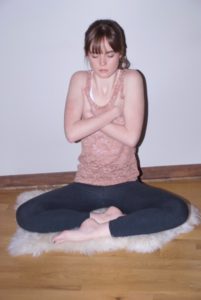
Try this one first thing in the morning or any time you are in need of a quick way to temper your emotions to calm and center yourself:
- First, drink a glass of water.*
- Sit in crossed-legged pose, or in a chair with legs uncrossed and spine straight.
- Place the arms across the chest and lock the hands under the armpits; palms are open and against the body.
- Raise the shoulders up tight against the earlobes. Pull the spine straight up from the back of the head which brings the jaw in and up.
- Close your eyes. Relax. Your breath will automatically become slow.
- Continue for 3 minutes, gradually increasing the time to 11 minutes.
*When upset, attention should be given to the body’s water balance and breath rate. Rhythmically slowing down the breath to only 4 breaths per minute, drinking water, pulling the shoulders up to the ears, and tightly locking the entire upper area gives indirect control over the mind. After two or three minutes, thoughts will be there, but will not be felt.
©The Teachings of Yogi Bhajan*
Maintaining your Center
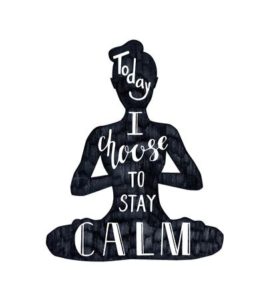
Life is constantly throwing things at you for you to deal with. Problems occur, surprises take place, and circumstances arise that cause you to lose your footing. And when these things happen you will probably get upset, your emotions will explode, your reactions will become involuntary … you might even freak-out.
But what you need to know is that emotions do not have to take over you – rather you can control them. It’s as simple as allowing yourself the time and space to use your tools. Breathe slowly, quiet your mind, visualize your happiness and relax as your emotions melt away.
*Author is registered KRI/RYT. Teachings shared with permission from KRI.
Unauthorized use and/or duplication of this material without express and written permission from this site’s author and/or owner is strictly prohibited. Excerpts and links may be used, provided that full and clear credit is given to Mechanics of Being with appropriate and specific direction to the original content.
